As announced recently, all toll highways on the west coast of Peninsular Malaysia including PLUS highway will be RFID enabled from the 15th January 2022. The adoption of RFID is aimed at reducing congestion and with the implementation of the Automated Number Plate Recognition (ANPR) system, highway users can look forward to a more seamless travel experience. Can you still use Touch ‘n Go cards? What’s the advantage of ANPR? Here are 8 things you need to know.
RFID with ANPR is the first step towards barrier-free highway experience
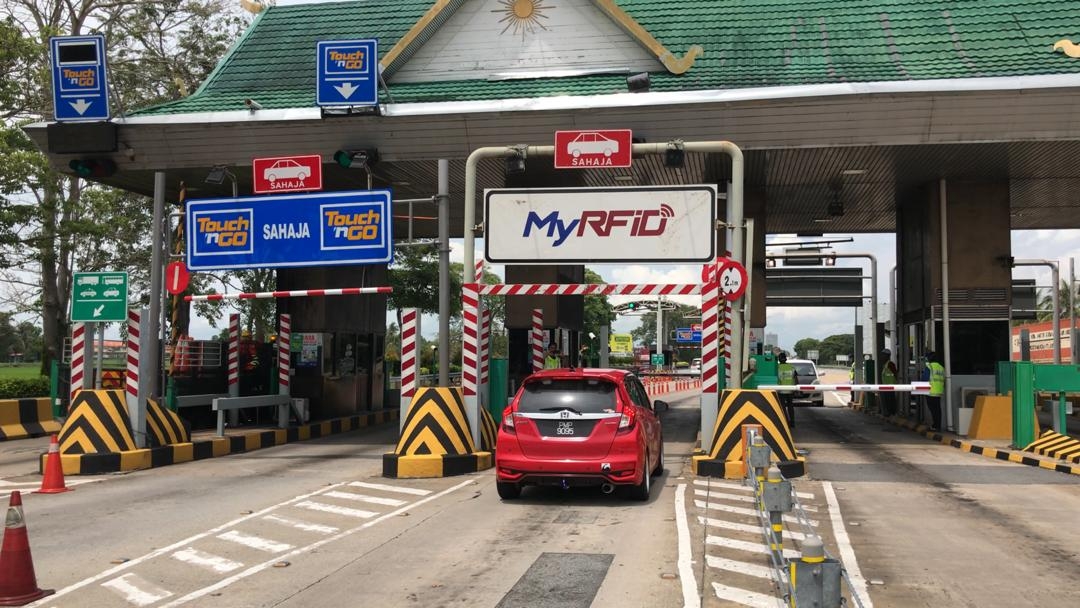
RFID for toll payments has been introduced in Malaysia since 2018 at selected highways and finally, it will be supported throughout the North-South highway in mid-January 2022. PLUS originally planned to enable RFID at all remaining 83 closed-toll plazas last year, but it was delayed due to the movement control order.
The Malaysian government aims to implement Multi-Lane Free-Flow (MLFF) by 2026 and the first step to do so is by implementing RFID. Since there are still legacy payment systems like Touch ‘n Go and SmartTAG, Malaysia has to take a step-by-step approach before all “palangs” and individual lanes are removed completely.
At the moment, PLUS has over 20 RFID lanes at 9 toll plazas and it will have a total of 159 RFID lanes ready throughout the North-South highway including the Juru to Skudai stretch by the 15th of January 2022.
The RFID lanes will still have a barrier for now which means you will need to slow down your vehicle as you approach the lane. The next progression in the near future would be Single-Lane Free-Flow (SLFF) implementation, where the barrier for RFID lanes will be removed.
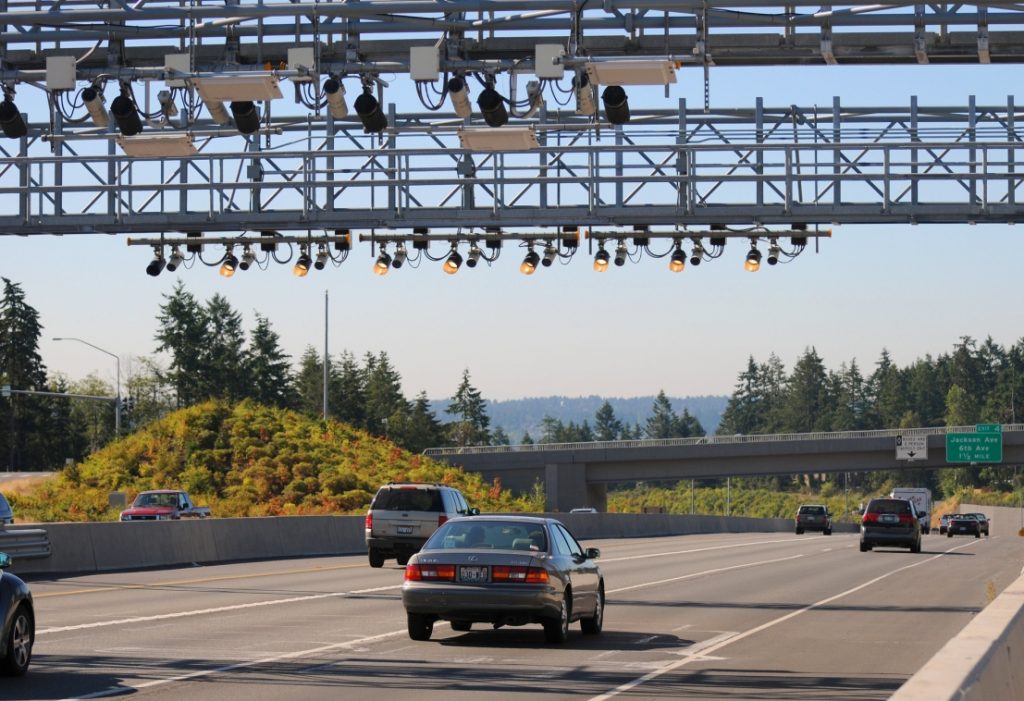
The transition from SLFF to MLFF can happen once RFID reaches mass adoption and there’s a clear framework for operators to collect toll payments from all vehicles including non-RFID users. Once this is achieved, slowing down to pay for toll would be a thing of the past as the RFID and ANPR system will be able to capture and charge all vehicles accordingly while travelling at highway speeds.

To recap, RFID uses a sticker that you can attach to your vehicle’s headlamp or windscreen. Unlike a SmartTAG, it doesn’t require batteries and you don’t need to queue up to reload a physical card as it is linked to Touch ‘n Go eWallet (TNG eWallet). Reloading is also much easier as you can do it on your smartphone via credit or debit card or top-up via online banking. For a more seamless experience, you can also enable auto-reload where the TNG eWallet will top-up automatically when the remaining balance drops below a preset amount (e.g. top up RM100 when the balance is less than RM50).
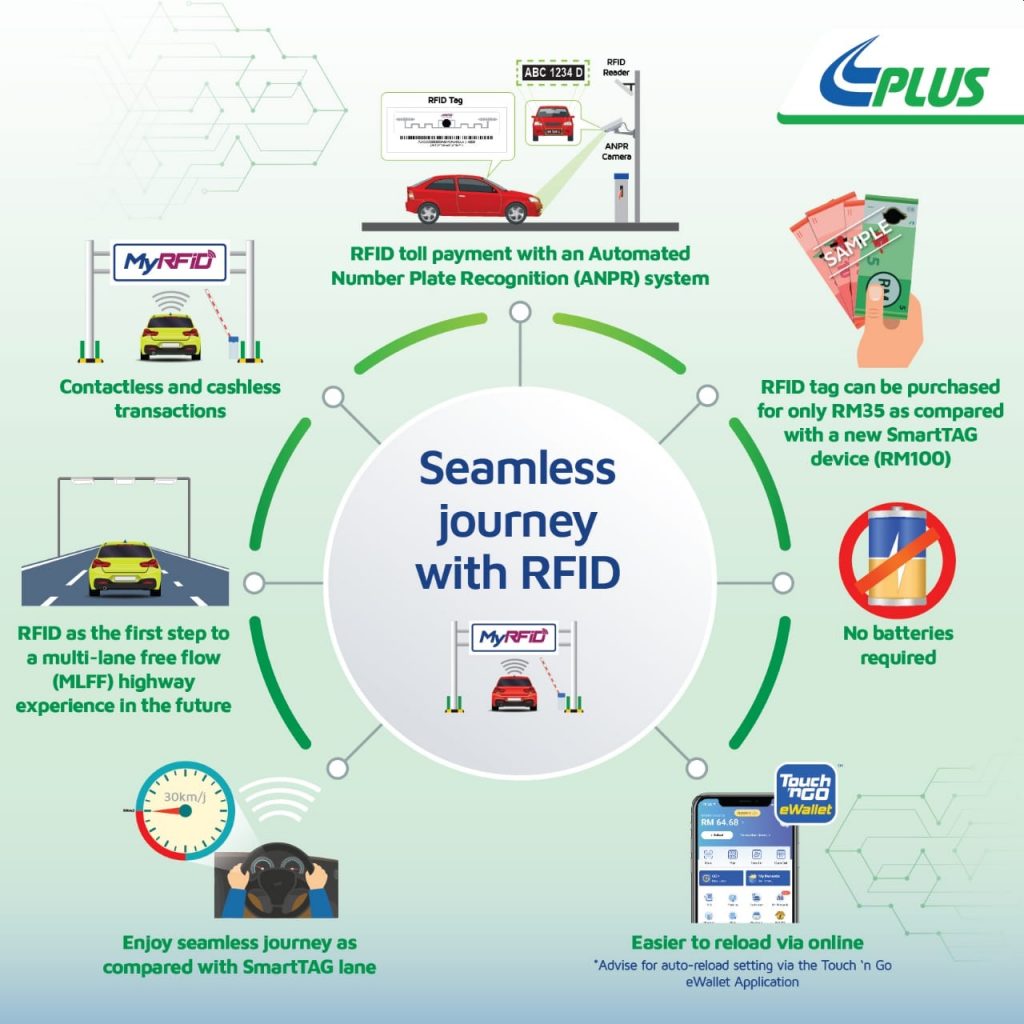
Another benefit of using RFID is its higher pass-through speed of 30km/h versus SmartTAG’s 20km/h. According to PLUS, an RFID lane can process 1,200 vehicles per hour (average 3 seconds per vehicle) versus SmartTAG which currently does about 550 vehicles per hour (6.55 seconds per vehicle).
Before you start bashing RFID’s current 30km/h passthrough speed, do know that the technology can actually support higher speeds once MLFF is implemented. We were previously told by Touch ‘n Go that the RFID sensitivity at each lane had to be reduced so that it won’t detect tags of other vehicles passing through the next lane. This is a temporary limitation until all the barriers are removed.
TNG and SmartTAG lanes are still available for now
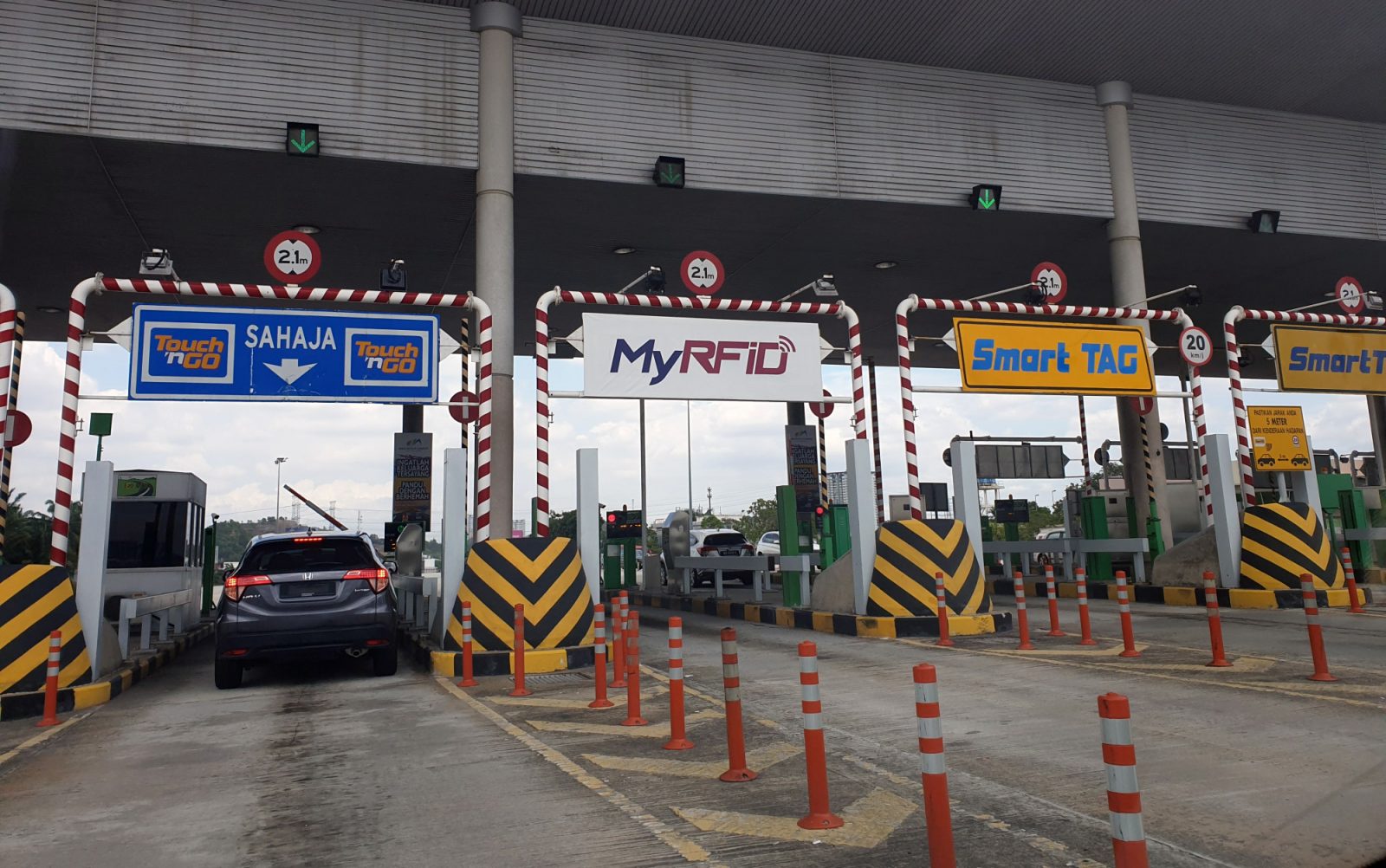
When the Works Ministry first announced all toll highways on the west coast of Peninsular Malaysia are RFID enabled in January, there was a misconception that only RFID payments would be accepted. This is definitely not true and the situation has been clarified by both PLUS Managing Director Datuk Azman Ismail and Deputy Works Minister Datuk Arthur Joseph Kurup.
The transition to MLFF will be done gradually and this means the Touch ‘n Go and SmartTAG lanes will remain for now. For a start, each toll plaza on PLUS will have at least one dedicated RFID lane and once more users switch to RFID, the existing TNG and SmartTAG lanes would be converted to RFID in stages.
Automated Number Plate Recognition on all entry lanes
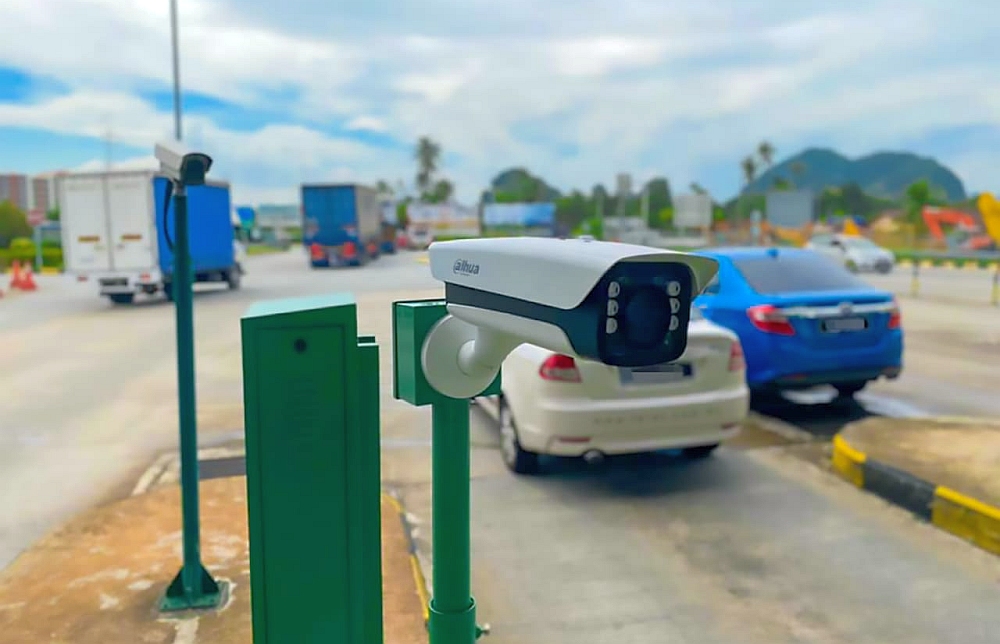
In addition to RFID, PLUS has also implemented Automated Number Plate Recognition (ANPR) as a secondary layer for validation. Using high-resolution cameras and artificial intelligence, the system can capture images of vehicles including the number plate and it’s connected to a Toll Validation Centre. The RFID and ANPR system first went live along the Hutan Kampung – Sungai Dua stretch on 31st October 2021 and it will be extended to all toll plazas throughout the highway next month. The ANPR system will be installed at all entry lanes including RFID, TNG, and SmartTAG.
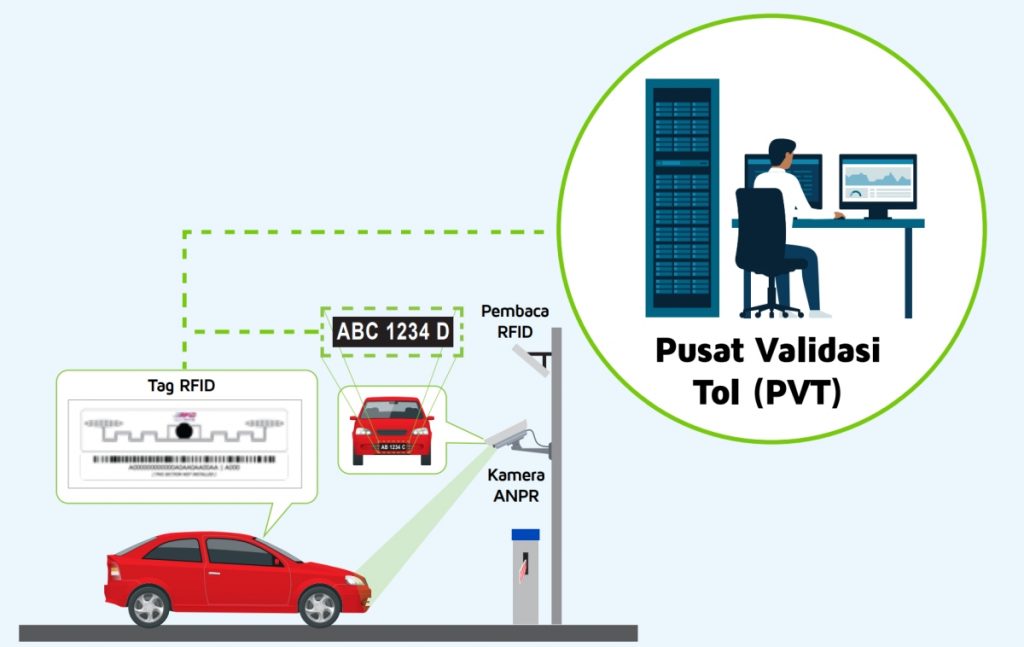
One of the main advantages of ANPR is to solve payment disputes to prevent users from being penalised with the maximum toll rate. The Toll Validation Centre will be able to track the actual entry and exit points of the vehicle so that the correct toll rate will be charged.
Despite the lack of standardised number plates, the ANPR’s recognition will improve over time using AI. However, if there are instances of hard-to-read fonts, missing characters, or damaged plates, a staff can step in to identify the plate manually. Besides recognising plate numbers, the cameras can also be used to detect the type of vehicle so that the correct toll charge is calculated based on vehicle class.
What happens if an RFID vehicle enters highway via TNG or SmartTAG but exits via RFID lane?
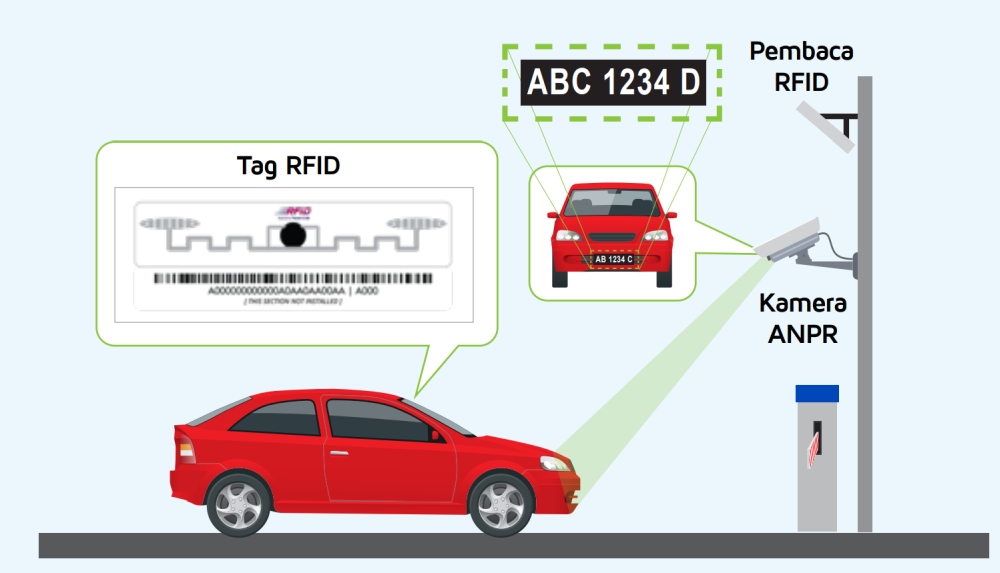
With the integration of ANPR, it is possible to solve disputes if an RFID-tagged vehicle enters the North-South highway via the TNG or SmartTAG lane by mistake, and then exit using the RFID lane. Since the ANPR has recorded your exact entry point, the correct toll charges will be deducted from your eWallet when you exit via the RFID lane. In a scenario whereby different lanes are used for entry and exit points, the charging mechanism will be based on the exit lane.
However, according to PLUS’ terms of use, you should always enter and exit the highway using the same payment lane. (E.g. enter via TNG, exit via TNG. Enter via RFID, exit via RFID).
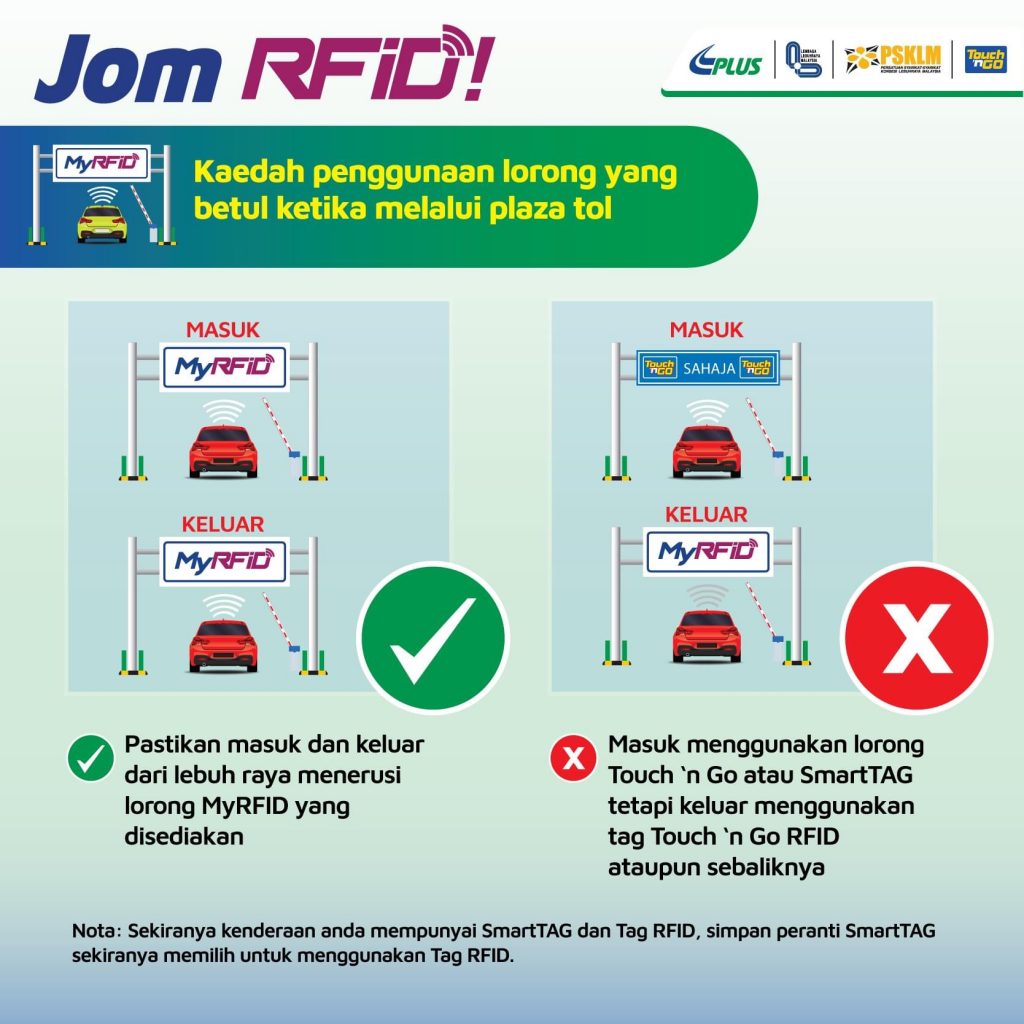
However, do note that the RFID lane is still strictly for RFID users only as the “palang” will only go up if a valid RFID tag is detected and there’s sufficient balance. The RFID tag is still the primary source of identification for the RFID lane and ANPR is used as a secondary validation method if there’s no record of entry via RFID. In the event that the tag is not readable or if the system is down, a PLUS staff will attend to you using a handheld RFID tag reader.
As always, you must always ensure that you have sufficient balance in your TNG eWallet before you start your journey. If you’re stuck at the RFID lane due to insufficient balance, you can reload immediately on your smartphone and the new balance will be reflected in a couple of seconds. To avoid an embarrassing situation, it is recommended to enable auto-reload for a worry-free experience.
More payment options coming soon for RFID
At the moment, RFID is tied to Touch ‘n Go eWallet. PLUS has shared that it will soon offer more direct payment options which including credit or debit card. This will be made possible through an RFID open payment system but so far there’s no timeline of its targeted availability. The plan to introduce an open payment system to democratise toll payments was first announced by CIMB Group and PLUS back in November 2019.
Although all PLUS toll plazas will support RFID, PayDirect isn’t supported yet. PLUS says they are working closely with TNG to enable more payment options.
Government aims to phase out TNG and SmartTAG use by end 2023

As shared by the Deputy Works Minister, Malaysia aims to achieve a 60% RFID adoption rate by the end of 2022 and to eventually phase out TNG and SmartTAG use by the end of 2023. Although some new cars may come with built-in SmartTAG readers, PLUS has actually stopped selling SmartTAG devices since 2018.
To encourage the adoption of RFID, PLUS will be running campaigns and promotions to attract more users to switch to RFID. This may include setting up more fitment centres for people to install RFID on their vehicles.
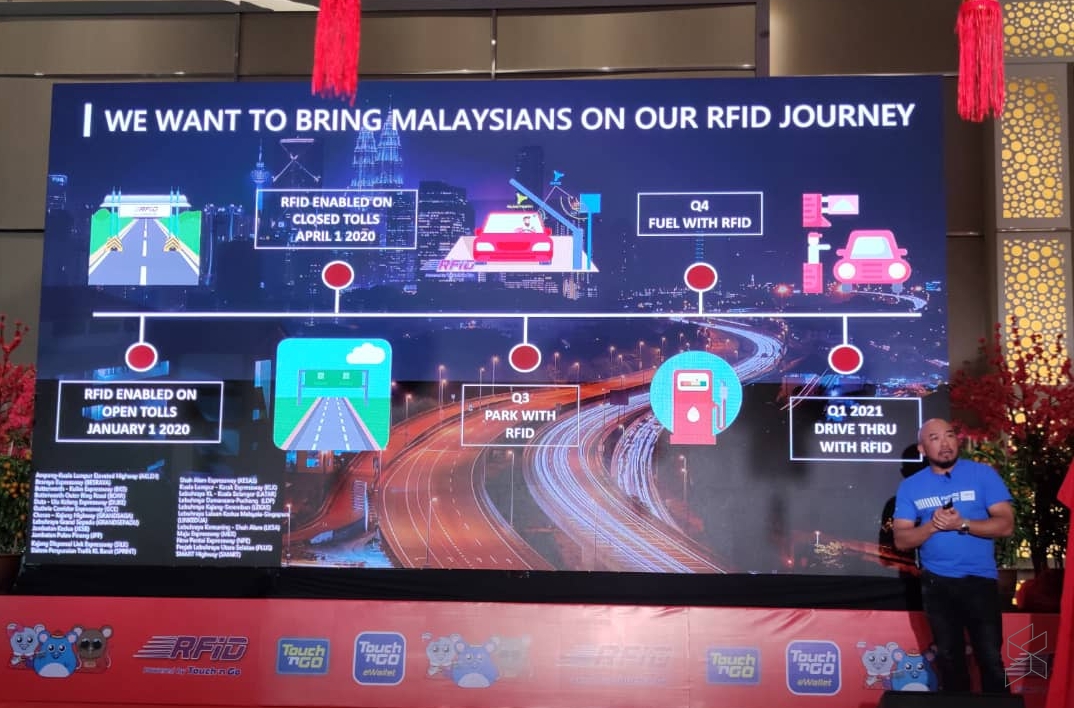
In case you didn’t know, RFID isn’t just limited to toll payments. TNG has plans to extend RFID usage to include parking, fuelling and also drive-thru purchases. At the moment, Shell supports RFID Fuelling at 5 selected stations where you can purchase petrol immediately without touching the card terminal or your smartphone. You can check out our RFID Fuelling experience below:
Current legal framework needs to enhanced before the “palang” is removed
Before Malaysia can move to SLFF or MLFF, there’s a need for a clear legal framework to enforce fraud and bad payment situations. Once SLFF is implemented, you can definitely expect some non-RFID users to use the barrier-less RFID lane. RFID and ANPR as a technology have a lot of potential but before the “palang” is removed, operators must be assured that all highway users are charged accordingly especially when there are cases of people avoiding tolls by tailgating.
In other countries, highway users are usually given a grace period to settle outstanding toll charges before a heavier penalty is charged. Perhaps one option is to suspend the renewal of road tax unless all outstanding toll charges and penalties are settled in full. Enforcement of standardised number plate design would also help the ANPR system to recognise vehicle numbers with greater accuracy.
Where to get RFID for your vehicle?
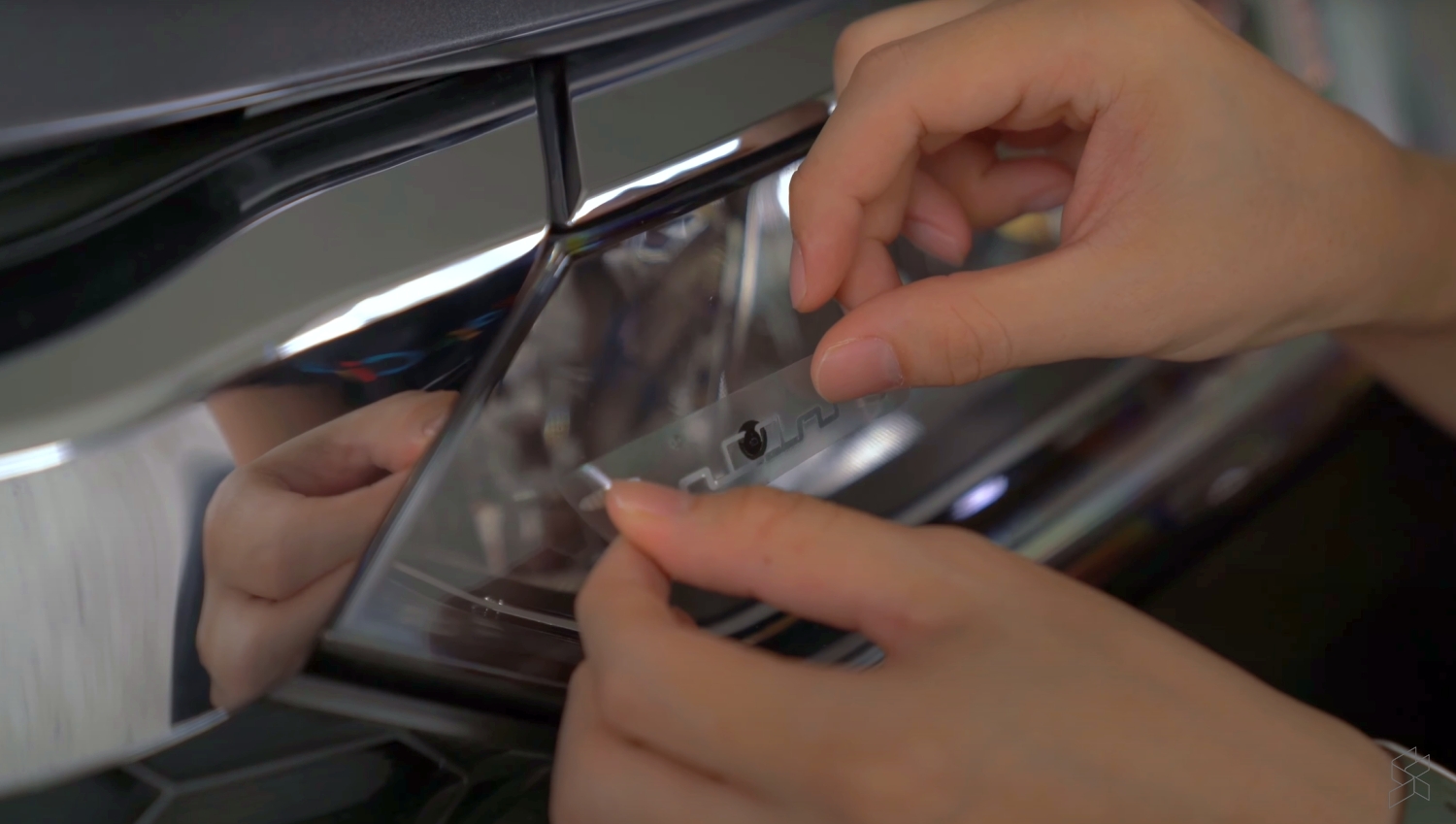
At the moment, a new TNG RFID tag costs RM35. You can buy a DIY RFID Self-fitment kit online or from the TNG eWallet app. If you prefer to have someone install it for you, you can visit one of TNG’s authorised fitment centres.
The RFID tag is non-transferable and it will be rendered useless if someone tries to steal it. If you have several vehicles at home, you can link up to ten RFID tags to a single TNG eWallet account which is easier to manage and reload.
Related reading
- Works Ministry: Govt targets to phase out Touch ‘n Go card and SmartTAG use by end of 2023
- All toll highways on the west coast including PLUS are RFID enabled from 15 January 2022
- PLUS deploys RFID with Automated Number Plate Recognition, works with higher speed than SmartTAG
- Touch ‘n Go card and SmartTAG lanes are still available on PLUS highway after 15 January 2022








